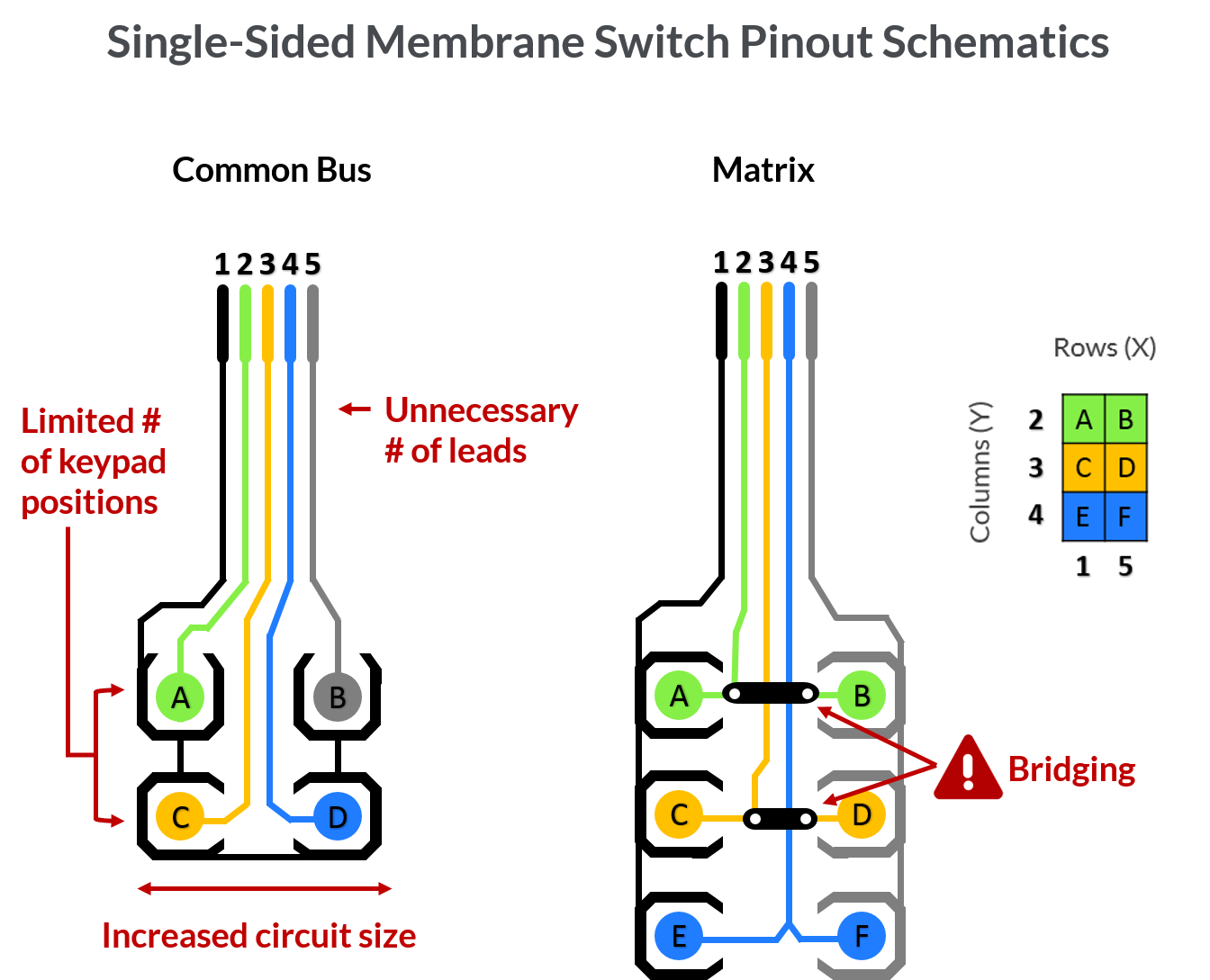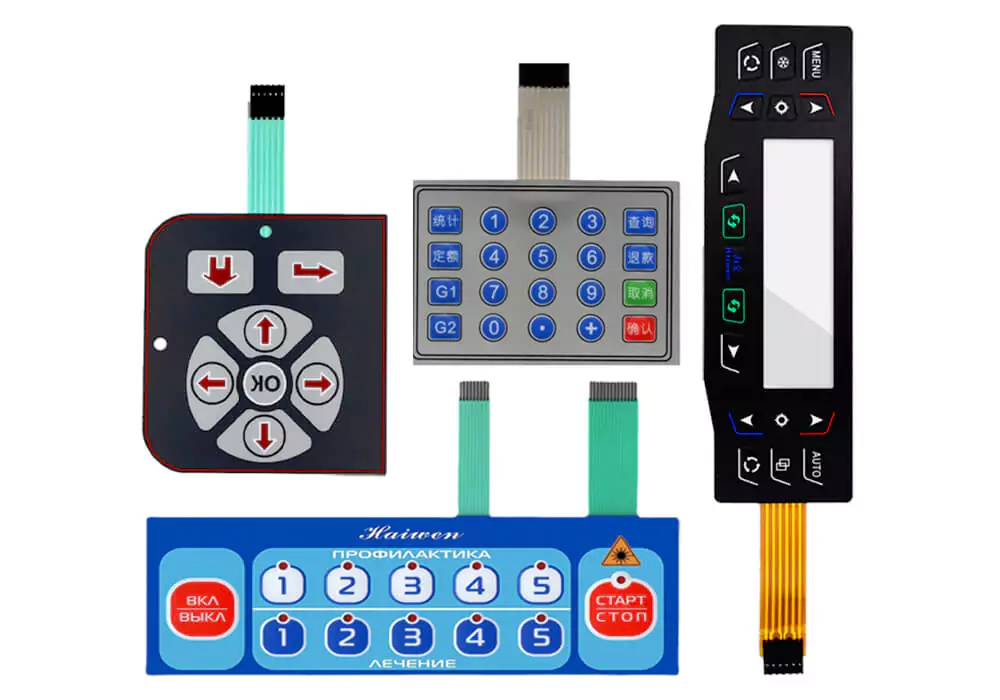The Manufacturing Refine Behind Membrane Change: What You Need to Know
The production process behind membrane layer switches combines mindful design, product selection, and quality assurance. It starts with comprehending the intricacies of membrane layer switch style and progresses with various stages, consisting of material options and printing techniques. Each phase plays an essential role in making certain performance and durability. Nevertheless, the intricacies of layer construction and the extensive screening standards might reveal understandings that are not immediately obvious. What exists past these fundamental elements?
Comprehending Membrane Layer Switch Over Design
Membrane layer buttons might show up straightforward at first glance, their design involves elaborate considerations that guarantee functionality and toughness. The design procedure begins with a detailed understanding of individual demands, including the interface's designated application and ecological variables. Ergonomics is a crucial element, as the design should help with ease of use while ensuring that tactile comments meets user expectations.Moreover, the layering of components, such as visuals overlays, glue layers, and conductive traces, need to be exactly engineered. membrane switch. This split setup not only influences the button's responsiveness yet likewise impacts its longevity. Attention is given to the securing methods utilized to protect versus wetness and dust, which could endanger efficiency. Furthermore, design factors to consider reach appearances, where shade schemes and aesthetic quality improve user experience. Inevitably, the style of membrane switches over balances capability, individual experience, and sturdiness, guaranteeing that they meet the needs of various applications properly
Materials Made Use Of in Membrane Switch Over Production
When selecting products for membrane button manufacturing, it is important to consider both efficiency and resilience. The key products include polyester and polycarbonate films, which provide adaptability and stamina. These movies are usually coated with glue to guarantee appropriate bonding to substratums. Conductive inks, usually made up of silver or carbon, are vital for creating electric links within the switch, permitting for dependable operation.Additionally, a safety layer, such as a tough coat, is often related to enhance scrape resistance and long life. The choice of backing material, such as acrylic or foam, can substantially impact the switch's tactile feeling and overall individual experience. In addition, different ecological variables, including temperature and humidity, need to direct product option to assure peak performance in particular applications. Inevitably, the ideal mix of products adds to the membrane layer button's capability and life-span, making educated choices important for producers.
The Printing Process: Creating Graphics and Text
The printing process in membrane switch manufacturing plays a considerable function in creating high-grade graphics and message. Numerous visuals style methods are utilized to ensure aesthetic charm and performance, while careful ink selection methods are essential for resilience and performance. Understanding these elements is fundamental for attaining ideal cause membrane switch layout.
Graphic Design Techniques
Graphic layout methods play a vital role in the printing procedure of membrane buttons, as they define just how graphics and message will eventually show up on the last product. Reliable graphic layout includes the strategic usage of formats, font styles, and shades to improve readability and aesthetic charm. Developers typically make use of vector graphics for scalability, making sure that images continue to be sharp at various dimensions. Additionally, interest to comparison and alignment is crucial, as it influences individual communication and aesthetic top quality. The incorporation of branding aspects, such as logo designs, should be managed with like maintain brand name integrity. In general, thoughtful visuals layout techniques contribute substantially to the functionality and beauty of membrane layer switches, affecting individual experience and item efficiency.
Ink Selection Techniques
Choosing the ideal ink is essential for accomplishing the desired visual high quality and longevity in membrane layer switch production. Various ink types are used, including solvent-based, water-based, and UV-curable inks. Each type offers unique attributes, such as resistance, attachment, and adaptability to ecological variables. Solvent-based inks are frequently favored for their toughness and lively shades, while water-based inks are a lot more eco-friendly however may have limitations in bond. UV-curable inks give fast treating and robust performance. Additionally, shade matching strategies assure that the chosen inks align with style requirements. Ultimately, the choice of ink must consider variables such as application approach, substrate compatibility, and end-use requirements to achieve superior lead to membrane layer switch graphics and message.
Layer Building And Construction and Setting Up

Product Choice Refine
A mindful option of materials is important in the manufacturing process of membrane switches, as it directly influences performance and toughness. The key products used include polyester, polycarbonate, and different conductive inks. Polyester is commonly preferred for its exceptional resistance to chemicals and abrasion, making it ideal for rough settings. Polycarbonate, on the various other hand, gives premium quality and influence resistance, which is beneficial for applications calling for presence and effectiveness. Conductive inks, commonly made up of silver or carbon, are crucial for producing dependable electrical pathways. In addition, the selection of sticky materials impacts the overall honesty of the button - membrane switch. Assessing aspects such as ecological exposure, tactile responses, and aesthetic requirements overviews makers in choosing the very best products for their details applications
Layer Attachment Methods
Adhering layers in membrane layer switch construction is an essential procedure that guarantees capability and durability. Different adhesion strategies are utilized to secure excellent bonding between layers, which typically consist of the use of adhesives, warmth, and pressure. Pressure-sensitive adhesives (PSAs) are commonly utilized for their ease of web application and prompt bonding abilities. In addition, thermal bonding methods can be used, where warm is made use of to trigger glue properties, safeguarding a strong bond. The selection of adhesion technique largely depends upon the pop over to this site products involved and the certain application requirements of the membrane layer switch. Correct alignment and uniform application of adhesives are crucial to avoid issues, securing the button runs effectively throughout its intended life expectancy.
Quality Assurance Procedures
Guaranteeing quality assurance throughout the layer construction and assembly of membrane layer buttons is essential for maintaining efficiency and integrity. This procedure typically involves a number of essential measures, including complete inspections at each stage of production. Makers make use of innovative screening methods, such as peel tests and adhesion evaluations, to confirm the stability of layer bonds. In addition, aesthetic examinations are performed to identify any type of issues in printing or product incongruities. Ecological problems, such as temperature level and moisture, are meticulously monitored to guarantee ideal treating and bond. Normal calibration of tools aids preserve exact production requirements. By executing these quality control measures, manufacturers can greatly lower the threat of product failure, guaranteeing that the final membrane layer switches over satisfy the required specifications and consumer expectations.
Evaluating and Quality Control Actions

Developments in Membrane Switch Technology
As developments in technology proceed to progress, membrane look at this now buttons are gaining from cutting-edge advancements that enhance their capability and individual experience. One significant advancement is the integration of capacitive touch modern technology, which enables even more user-friendly and receptive individual interfaces. This change not only boosts appearances however also lowers mechanical wear and tear, expanding the lifespan of the switches.Additionally, innovations in graphic overlay products have actually resulted in boosted sturdiness and resistance to ecological elements such as dampness and UV light. These materials now supply enhanced clearness and illumination, further raising the aesthetic appeal.Furthermore, the incorporation of wise modern technology is transforming membrane switches over into interactive control panels, making it possible for connection with IoT devices. This connectivity cultivates a smooth user experience, leading the way for applications in numerous industries, from health care to customer electronic devices. Jointly, these developments setting membrane layer switches over as critical components in contemporary gadget layout.
Regularly Asked Questions
For how long Does the Membrane Layer Change Production Refine Take?
The period of the membrane layer button production procedure can differ substantially. Variables such as intricacy, materials used, and production volume influence timelines, with typical production ranging from a few days to several weeks for completion.
What Are the Common Applications for Membrane Switches?
Membrane layer switches are commonly used in various sectors, including vehicle controls, house devices, clinical tools, and consumer electronics (membrane switch). Their flexibility and toughness make them suitable for applications needing easy to use interfaces and dependable performance in varied settings
Can Membrane Layer Changes Be Custom-made for Certain Requirements?

What Is the Life-span of a Common Membrane Change?
The life-span of a typical membrane switch varies, but typically, it ranges from 1 to 5 million cycles. Elements such as usage, atmosphere, and worldly high quality considerably affect durability and overall performance over time.

Are Membrane Layer Switches Over Ecologically Friendly?
The environmental kindness of membrane layer changes varies. Some materials made use of may not be recyclable, while others can be environmentally friendly. The overall influence relies on producing methods and materials, necessitating careful factor to consider during selection and disposal. The production process behind membrane switches combines mindful style, material option, and top quality control. It begins with understanding the ins and outs of membrane button style and progresses via different stages, consisting of product choices and printing strategies. When selecting products for membrane button manufacturing, it is essential to ponder both performance and durability. A cautious selection of materials is essential in the manufacturing procedure of membrane layer switches, as it straight influences performance and resilience. The selection of adhesion technique largely depends on the products entailed and the certain application needs of the membrane button.